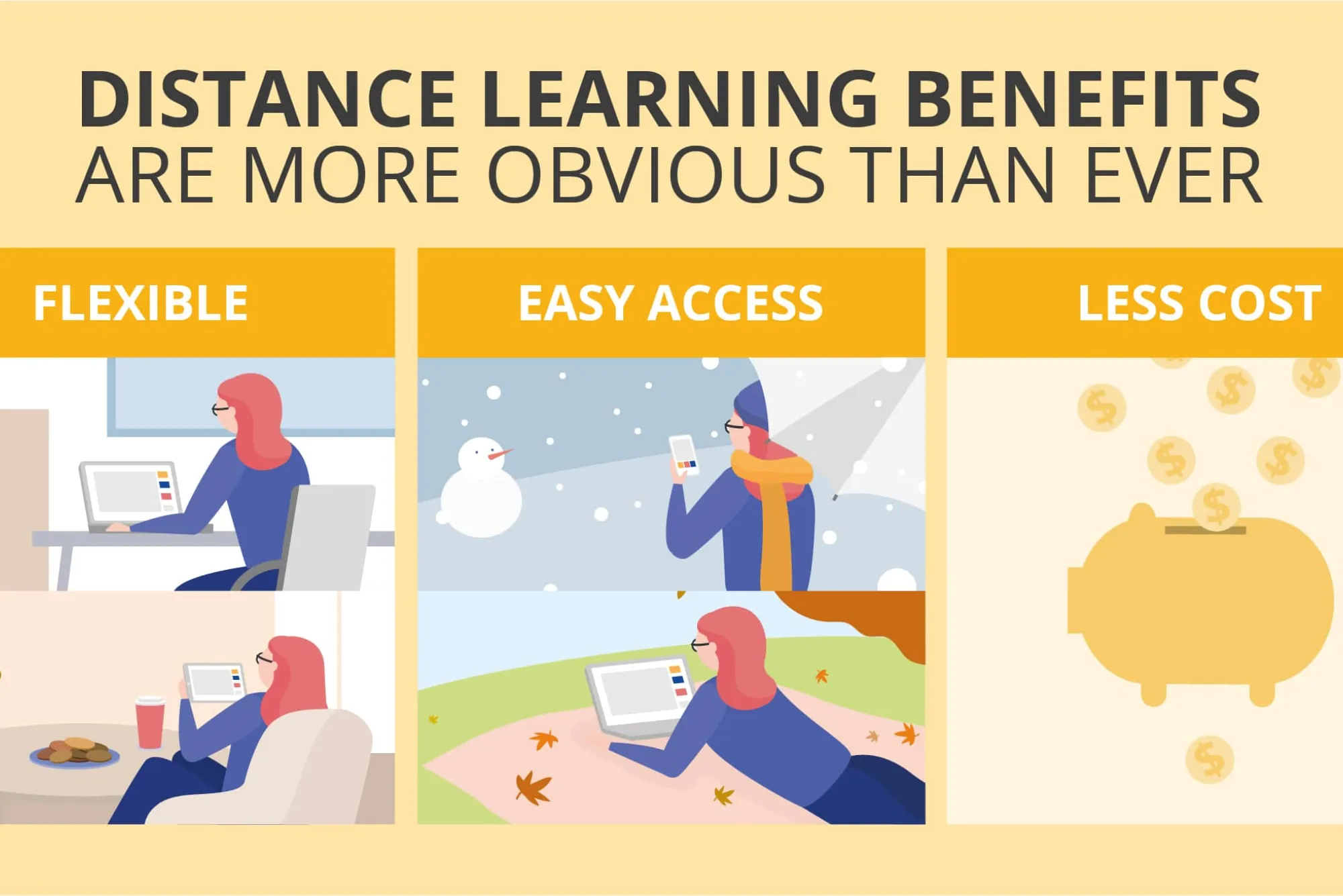Distance Learning: The Future of Education
Distance learning has become a transformative force in the field of education, especially in recent years. As technology continues to evolve, it has paved the way for more flexible and accessible educational opportunities. In this article, we will explore what distance learning is, its advantages, challenges, essential tools, and how it compares to traditional classroom learning.
What is Distance Learning?
Distance learning, also known as online education, refers to a mode of learning where students engage with course materials and instructors remotely rather than attending physical classrooms. It includes various types of learning, such as fully online courses, virtual classrooms, and self-paced learning programs.
The concept of distance learning isn’t new; it dates back to the late 19th century when correspondence courses were offered via mail. Over the years, with the advent of the internet and digital technologies, distance learning has evolved into a highly accessible and diverse method of education. Today, many institutions around the world offer online degrees, certifications, and courses across a wide range of fields.
Advantages of Distance Learning

Flexibility in Learning Schedules
One of the biggest draws of distance learning is its flexibility. Students can often choose when and where they want to study, making it ideal for those with busy schedules or other commitments, such as work or family. This flexibility enables learners to progress at their own pace, which is particularly beneficial for adults returning to education or those with other responsibilities.
Accessibility for Students Worldwide
Distance learning breaks down geographical barriers, allowing students from all corners of the world to access quality education. As long as they have an internet connection, learners can participate in programs and courses from prestigious institutions regardless of their location. This has democratized education, making it accessible to individuals who might not otherwise have the opportunity to attend traditional schools.
Cost-Effectiveness
Distance learning programs are often more affordable than traditional in-person education. There are fewer overhead costs for institutions (such as building maintenance), which allows them to offer lower tuition fees. Additionally, students save money on commuting, textbooks, and other associated costs that typically come with on-campus learning.
Self-Paced Learning and Personalized Education
Distance learning often allows students to learn at their own pace. This is especially beneficial for those who need more time to grasp certain concepts or for students who prefer to advance through the material quickly. The ability to personalize the learning experience is one of the key advantages of online education, enabling individuals to tailor their studies to fit their unique learning styles.
Ideal for Working Professionals
Many distance learning programs are designed with working professionals in mind. They offer evening or weekend classes, asynchronous formats, or flexible deadlines to accommodate the schedules of those who are employed full-time. This makes it easier for individuals to pursue higher education or new certifications while continuing to work and support themselves.
Challenges of Distance Learning

Lack of Face-to-Face Interaction
A significant challenge of distance learning is the lack of in-person interactions. For many students, face-to-face communication with instructors and peers is an important part of the learning process. The absence of this interaction can make it harder for some students to feel connected to the course material and their classmates, leading to feelings of isolation or disengagement.
Technology Barriers
Despite the advancements in online education, not all students have access to the necessary technology. A reliable internet connection and a device capable of supporting online learning platforms are essential, yet many individuals, particularly in remote or underprivileged areas, may not have access to these resources. This creates a barrier to entry for those who wish to participate in distance learning.
Self-Discipline and Time Management Issues
Distance learning requires a high level of self-discipline and time management. Students must be proactive in managing their schedules and staying on track with assignments, without the structured environment of a traditional classroom. This can be challenging for individuals who struggle with time management or those who are not accustomed to self-directed learning.
Limited Networking Opportunities
While online courses may include forums and group projects, they cannot replicate the networking opportunities that in-person learning offers. Building professional relationships, interacting with classmates, and engaging in extracurricular activities are often more difficult in a virtual setting. Networking is an essential part of many educational experiences, and distance learning may lack this crucial component.
Potential for Reduced Social Engagement
Distance learning can also lead to social isolation. Without the physical interaction that comes with attending classes on campus, students may miss out on the social aspect of learning. This can have an impact on their overall well-being and may reduce their motivation to stay engaged in their studies.
Distance Learning Tools and Technologies
Learning Management Systems (LMS)
Learning Management Systems (LMS) are essential platforms that help instructors and students manage coursework and communication. Popular LMS platforms like Moodle, Canvas, and Blackboard provide students with access to course materials, assignments, discussion boards, and grade tracking. These platforms streamline the learning process, making it easier for students to keep track of their progress.
Video Conferencing Tools
Tools like Zoom, Microsoft Teams, and Google Meet have become indispensable for virtual classrooms. These platforms enable real-time interaction between instructors and students, making live lectures, Q&A sessions, and group discussions possible. Video conferencing allows for face-to-face interaction, even in a remote learning environment, which helps maintain a sense of connection and engagement.
Interactive Course Materials
Many distance learning programs utilize interactive course materials, such as videos, quizzes, and assignments, to keep students engaged. These resources can make learning more dynamic and provide a deeper understanding of the subject matter. Interactive elements help students apply what they’ve learned and track their progress.
Collaborative Platforms
Discussion forums and collaborative tools are essential for encouraging interaction among students. Platforms such as Slack, Google Docs, and discussion boards allow learners to share ideas, ask questions, and work together on projects. These platforms foster a sense of community among distance learners, helping them stay engaged and connected.
Distance Learning vs. Traditional Classroom Learning
When comparing distance learning to traditional classroom learning, several key differences emerge. Traditional learning offers a structured, in-person environment where students benefit from face-to-face interactions with professors and classmates. However, it comes with time and location constraints, as students must attend classes at specific times and in specific locations.
In contrast, distance learning offers flexibility and convenience, but often lacks the same social and networking opportunities. It may also be challenging for students who prefer a more hands-on, traditional approach to learning. Ultimately, the best option depends on individual preferences, goals, and learning styles.
The Future of Distance Learning
The future of distance learning is promising, with advancements in technology continually shaping the landscape. The rise of artificial intelligence (AI) and virtual reality (VR) is poised to revolutionize online education by providing more immersive and interactive learning experiences. Hybrid learning models, which combine online and in-person instruction, are also becoming more common, offering students the best of both worlds.
As global access to technology improves, more people will be able to engage in distance learning, creating a more inclusive and diverse educational environment. The flexibility and accessibility of distance learning will continue to make it an attractive option for students worldwide.
Distance learning has come a long way and is now a mainstream option for students around the world. While it offers numerous advantages such as flexibility, accessibility, and cost-effectiveness, it also presents challenges like a lack of face-to-face interaction and self-discipline issues. As technology continues to evolve, the future of distance learning looks bright, with new tools and advancements making it even more efficient and engaging.
For those seeking flexibility and a personalized learning experience, distance learning is an excellent choice. However, it requires dedication, self-motivation, and the right tools to succeed. Embracing these opportunities can unlock a world of educational possibilities and provide the foundation for a successful future.
Frequently Asked Questions (FAQ)
Can distance learning be as effective as traditional learning?
Yes, distance learning can be just as effective, especially with the right resources, tools, and motivation. The key is to stay disciplined and take advantage of the interactive platforms and materials offered.
Is distance learning cheaper than traditional education?
Generally, distance learning is more affordable due to lower overhead costs for institutions and the lack of physical infrastructure. However, costs vary depending on the program and institution.
What are the best tools for distance learning?
Some of the best tools for distance learning include Learning Management Systems (LMS), video conferencing tools like Zoom, and collaborative platforms like Google Docs and Slack.
This article provides an in-depth look at distance learning, its benefits, challenges, and the tools needed for success. With the ongoing advancements in digital education, distance learning is becoming an increasingly viable and valuable option for students worldwide.






